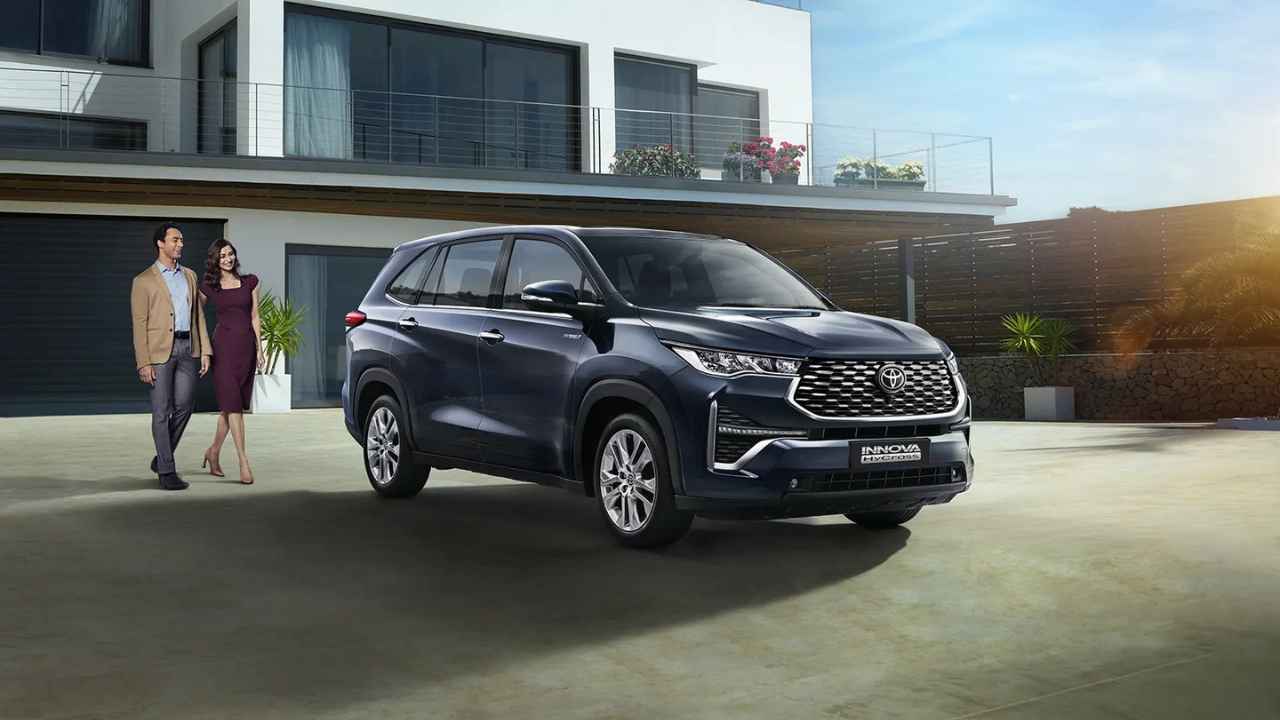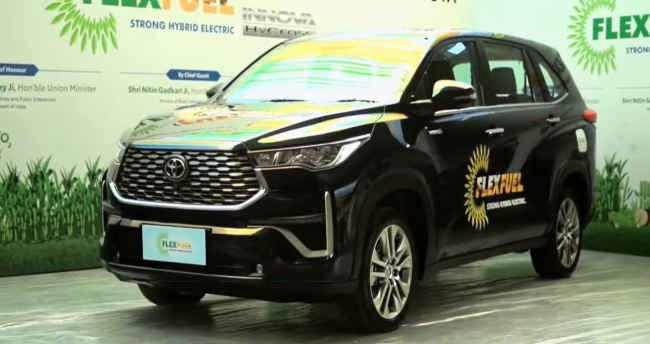World’s first BS-VI (Stage-II) electrified FFV unveiled: Why it’s not your regular Toyota Innova Hycross

The new Innova Hycross protoype will make use of Ethanol, which is the cleaner alternative to gasoline
A flex-fuel vehicle can run on any blends of Ethanol that are higher than 20 percent
Apart from being more eco-friendly than gasoline, Ethanol also has a higher octane rating for enhanced engine performance
Toyota has unveiled the world’s first BS-VI (Stage-II) electrified flex-fuel prototype vehicle. The prototype car, based on the popular Toyota Innova Hycross, is the first vehicle that combines flex-fuel technology with electric mobility. The new car, based on the Innova Hycross, is the first vehicle to come with flex fuel self charging strong hybrid (FFV-SHEV) technology. This means that apart from being a flex-fuel powered car, it will also use an electric powertrain to support the engine, offering better fuel efficiency while reducing the carbon footprint.

The new Innova Hycross protoype will make use of Ethanol, which is the cleaner alternative to gasoline, since it is a biofuel made from sugar and food grains. The Innova Hycross FFV will also run on a flex-fuel engine, which will run on a mix of Ethanol and Gasoline. Currently, India has achieved an Ethanol blend of 11 percent. A flex-fuel vehicle can run on any blends of Ethanol that are higher than 20 percent. During the launch, Union Minister of Road Transport and Highway, Nitin Gadkari, along with Union Ministers Hardeep Singh Puri and Mahendra Nath Pandey, said that India will be able to locally manufacture 20 percent ethanol blend in the next two year by 2025.

Now, apart from being a more eco-friendly alternative to gasoline, Ethanol also has a higher octane rating, which enhances the engine performance. However, since it also has a lower energy content, it means that ethanol isn’t as efficient as gasoline. This is where the electric powertrain on the Innova Hycross BS-VI (Stage II) steps in, offering not only a more eco-friendly alternative to internal combustion engines, but also a more efficient alternative.
Since it is a hybrid and not a proper EV, it will also make use of minimal batteries, which means that the company will not have to pay the high import duties on the vehicle. The government aims to shift from internal combustion engines towards electrified FFVs, enabling a new manufacturing base for electric vehicles.
WHAT IS A FLEX FUEL VEHICLE (FFV)?
Flex Fuel cars are those that can run on different blends of fuel, the most common one being the ethanol-gasoline blend. Flex fuel vehicles can run on both Ethanol and Gasoline, or a blend of the two. As mentioned above, FFVs can run on any ethanol-gasoline blend that goes beyond 20 percent, meaning that there is 20 percent ethanol and 80 percent gasoline. The most common ethanol blend right now is E85, which contains 85 percent ethanol and 15 percent gasoline.
FFVs can, however, run on regular gasoline or any ethnol-gasoline blend beyond 20 percent. FFVs usually have a sensor that can detect the ethanol content in the fuel that is being used. This allows the engine’s computer to adjust various parameters like fuel injection and ignition timing to optimise performance for the specific blend of fuel in the tank.
HOW IS NEW TOYOTA INNOVA HYCROSS FFV PROTOTYPE DIFFERENT?
When compared to regular FFVs, the new prototype from Toyota is different since it also has an electric powertrain that will support the FFV engine. This will help cushion the lack of efficiency that ethanol blends are usually known for, as well as giving people the option of running the car on purely electric.
The prototype from Toyota comes with FFV-SHEV technology, which stands for Flex Fuel Self Charging Strong Hybrid Technology. The Toyota Innova Hycross BS VI (Stage-II) Electrified FFV will also keep charging its battery when the car is moving, in order to offer the best efficiency with the smallest carbon footprint.




